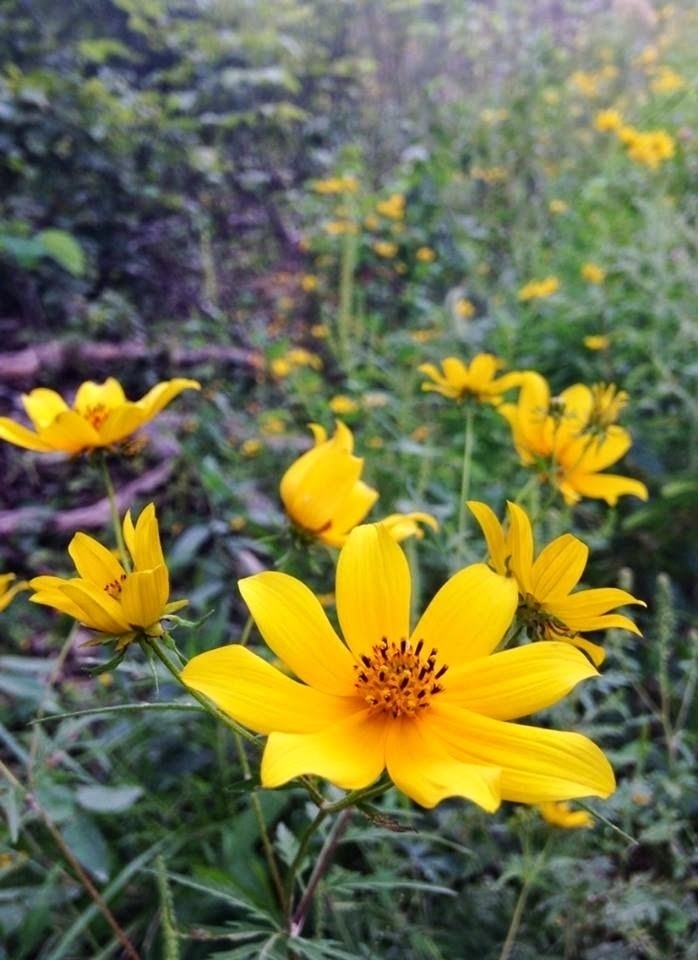Nature
Learning to walk in the woods
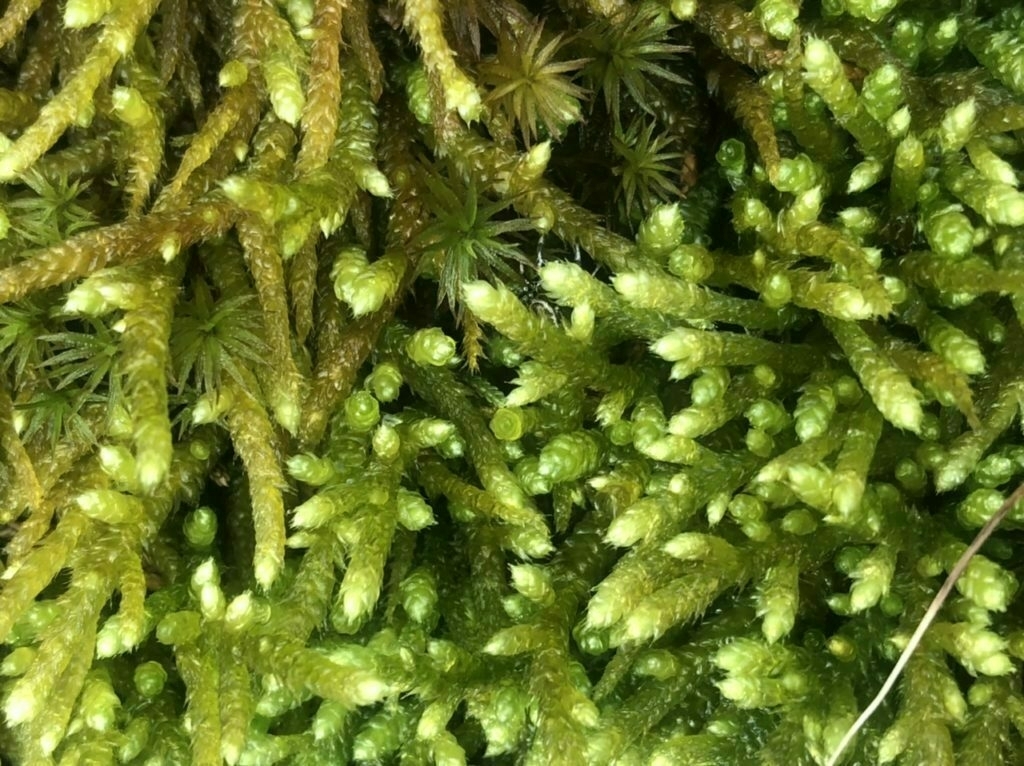 So, file this under “Living here for most of the past 10 years and still get to see something new!” On my trail walk a couple days ago I had my first extended viewing of an owl. I’ve caught sight of them several times while walking but usually it’s when they leave one tree and fly to another and are then out of sight. But on this particular walk I saw one fly and it landed in a tree further down in the direction I was headed. I kept an eye on it and found it in the tree as I got closer. I was able to look for a full minute or so. I could have stayed longer as it didn’t fly away but it was up high enough that I couldn’t see details without binoculars. But still, had a good look. My immediate thoughts were that I need to remember to look up more often rather than my usual focus on the path in front of me.
So, file this under “Living here for most of the past 10 years and still get to see something new!” On my trail walk a couple days ago I had my first extended viewing of an owl. I’ve caught sight of them several times while walking but usually it’s when they leave one tree and fly to another and are then out of sight. But on this particular walk I saw one fly and it landed in a tree further down in the direction I was headed. I kept an eye on it and found it in the tree as I got closer. I was able to look for a full minute or so. I could have stayed longer as it didn’t fly away but it was up high enough that I couldn’t see details without binoculars. But still, had a good look. My immediate thoughts were that I need to remember to look up more often rather than my usual focus on the path in front of me.
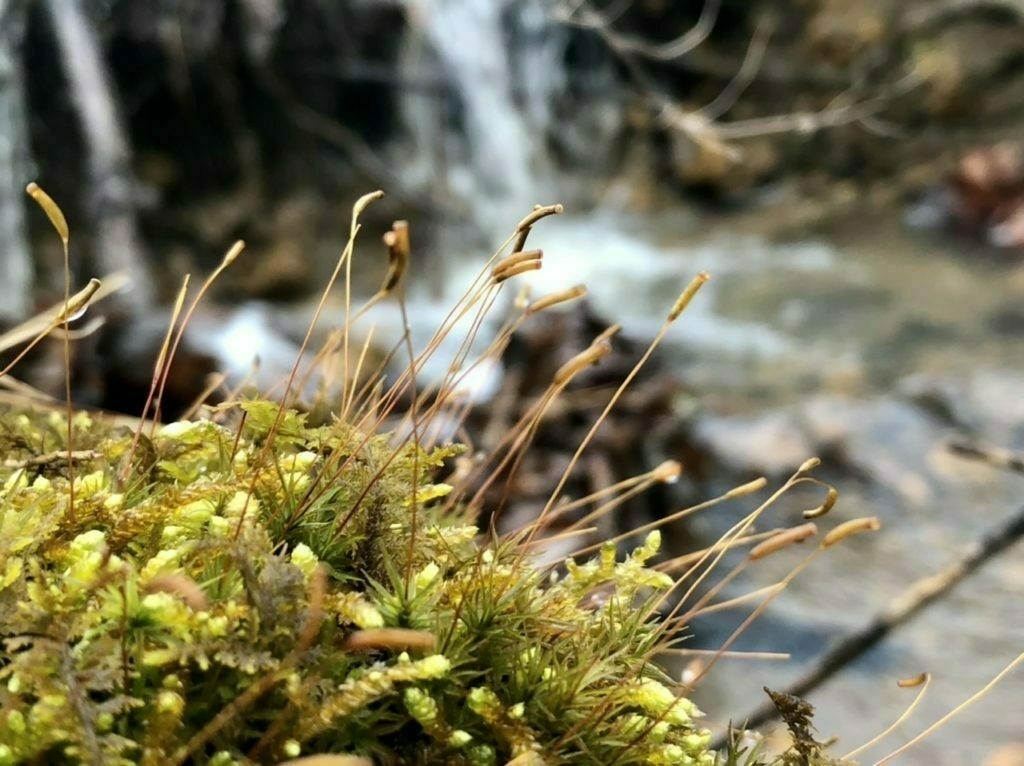
Yesterday while walking after a lot of rain I was stopping often to photograph and video the streams and little water falls. It got me into a more observational mode. While I had to watch the path for slippery spots I was walking more slowly and just generally being in a more observational mode rather than walking for exercise mode. I stopped and just stood still looking off through the woods. With the trees and lower level foliage still bare it’s possible to see a much longer distance. Within just a minute of stopping and looking deeper into the woods, at about the limit of my eyesight, I caught sight of a fox. I should note that I’m not 100% certain given the distance but given the size, shape and movement of the animal I’m fairly certain it was a fox. It was only a glimpse but still, exciting!
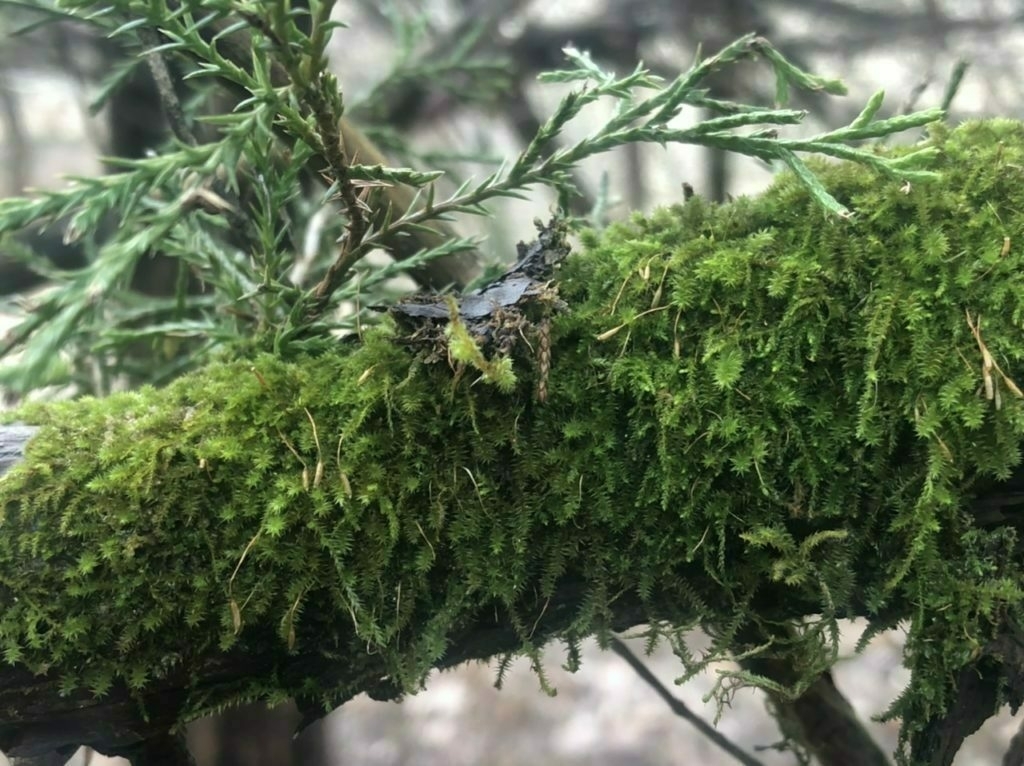
Again, I was reminded what a poor observer I often am. My habit when walking is to be walking. Even if I do rememer to look up I’m usually still moving. So, another lesson learned is that not only do I need to look up more often but that I need to stop and stand still more often. I think that act, of being still for at least a few minutes is what will really allow for much deeper observation of the landscape and what is happening around me. Not only that but were I to carry a small sitting stool or be willing to stop and sit on the ground for say, ten or twenty minutes, that extended stillness would also allow for my becoming less visible to other animals, notably those I rarely see such as fox.
Really it’s an obvious thing I’m stating here but I suspect it’s also something others might forget to do while in the woods. It’s an easy thing to forget to do, especially when provided nice walking paths, to just stop and hold. Also, I’ll note that when I go for walks it is for the purpose of exercise. To walk for observation is a different thing and I’ll need to remember that and find a balance between the two.
Spring is here and all around green buds are popping. In the next few weeks the open understory of the woods will fill with foliage and the long view I’m enjoying now will shrink to a much smaller distance. I plan to practice a more active observation with more frequent stopping and suspect that will be beneficial but it will likely be in the winter months that such a practice will really prove helpful both in terms of wildlife observation as well as developing a better understanding of the topography of the land.
In the woods
I’ve been living in the cabin for most of the past 12 years. The first four were spent mostly outside gardening and clearing the area of tornado-downed trees.The fifth was a lot of time outside at night looking through the telescope and then I left for two years. When I returned in the fall of 2015 I never quite got back into the rhythm of gardening or my time at the telescope. I was still outside a lot but not in the steady, mission-driven way that I had been before. My time outside became more casual and meandering.
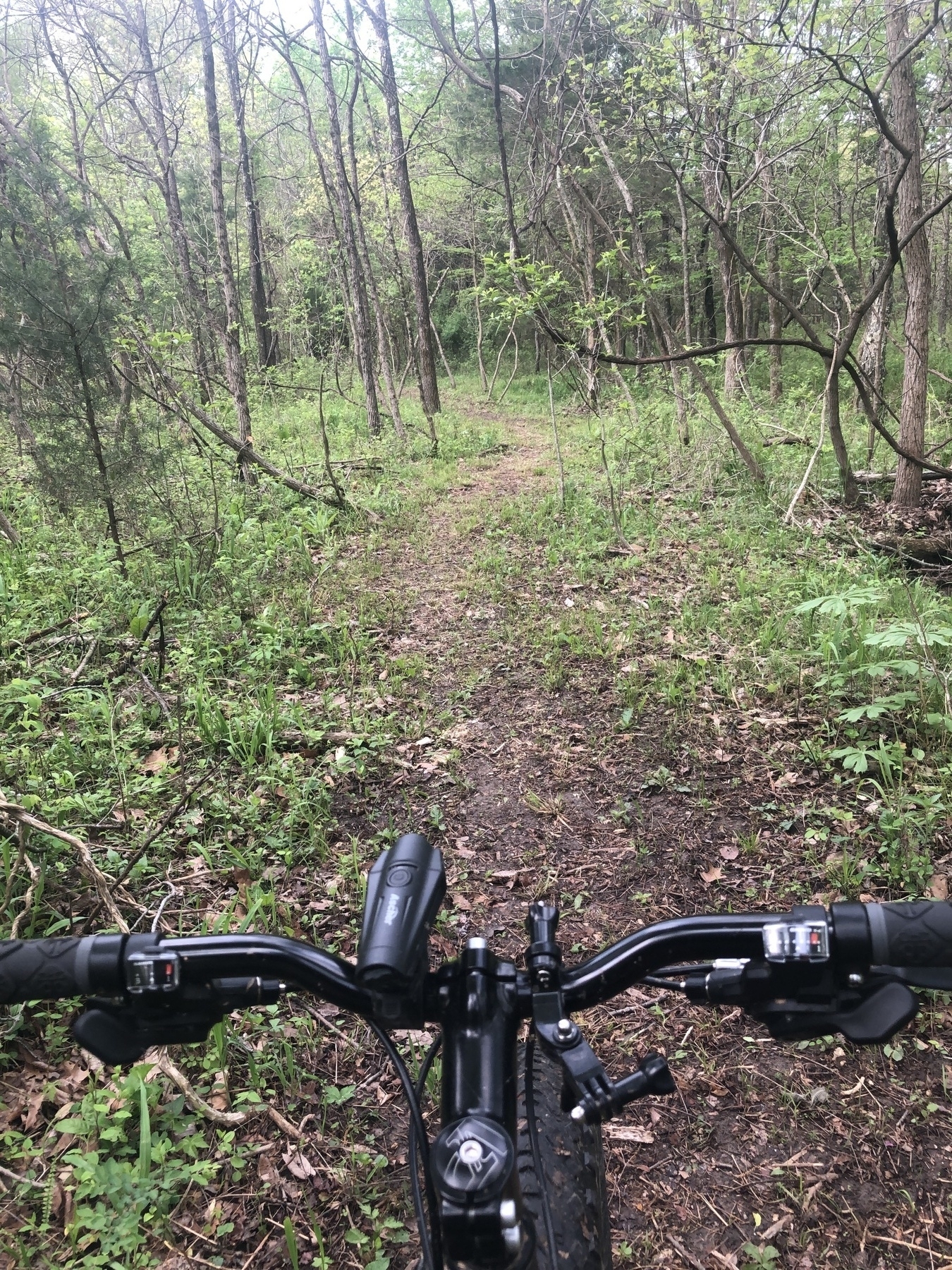
The simple act of just getting out into the quiet woods during the springtime has been a privilege I wish more people had access to especially in these times of the Covid virus. I’m used to having outside time and space so it’s not really new for me but a lot of people are struggling with what to do with themselves.
[caption id="" align=“aligncenter” width=“2780”]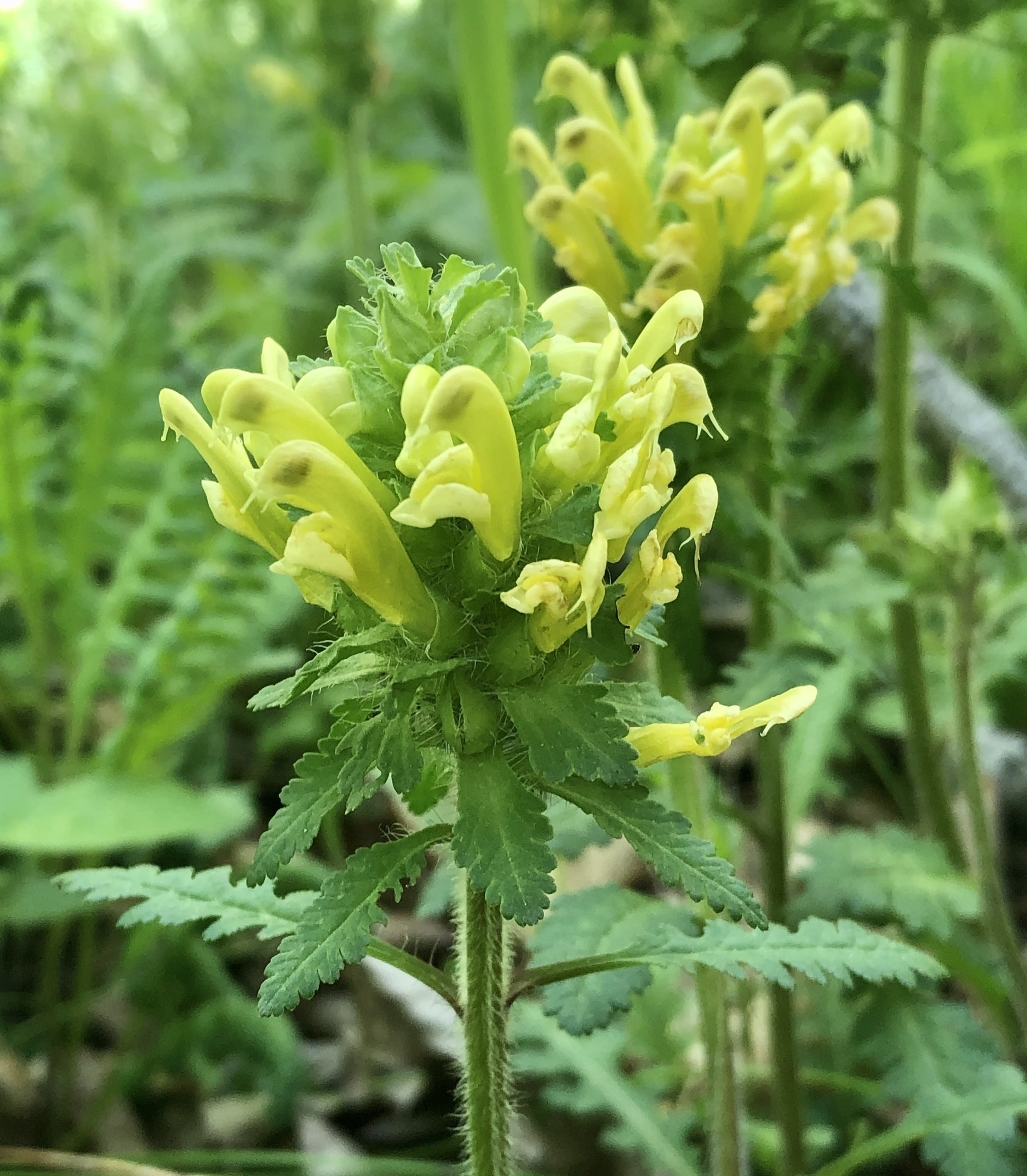 Wood Betony, a favorite spring food source for bumble bees[/caption]
Wood Betony, a favorite spring food source for bumble bees[/caption]
Species Extinction Accelerating
This. Yes, this says it well.
Alexandra Petri writing for the Washington Post about the recent UN Report: Nature’s Dangerous Decline ‘Unprecedented’; Species Extinction Rates ‘Accelerating’,
Just admit it! You don’t care about other species!
Look, let’s abandon this charade, all right?I understand: You do not give a ringtailed lemur’s posterior about the majority of life on earth. I fully get it. Believe me, I barely give a carp about it, and some of it is my family. Just — respect me enough to admit it, okay?
For years I have come to you with news that the prairie chicken is not doing so well, and you have furrowed your brow and made concerned sounds. But — the prairie chicken does no better. I am sure you intend to do something about the prairie chicken, but “doing something about the prairie chicken” has slid somewhere on your priorities list below “doing nothing about the prairie chicken" and “forming strong, detailed opinions about the coffee cup that briefly appeared in a single shot of ‘Game of Thrones.’” And that’s fine! I mean, it’s not fine, but it’s between you and your God. Just, admit it, so we can stop wasting time.
I feel like the hardest part of my job right now as a scientist is how you pretend you care about other living beings (apart from dogs and cats, the dunking otter, the new dunking otter, or the occasional octopus who has on account of his exceptional gifts risen from straitened circumstances, pulling himself up by eight bootstraps). To save the rich and glorious tapestry of species that makes life possible on earth, there is nothing you would not do, except alter the way you live in even the slightest bit or be mildly inconvenienced for a very brief time. That is the sense I’m getting? I guess I understand why it is an important element of your self-image that you care about such things, but — look, you are not fooling anyone.
A Sense of time
As is often the case I have a tendency to become less regular in my posting here. As I was writing up a description of a recent episode of the Discovery Podcast to share on a slack channel it occurred to me that this is exactly the sort of thing I should post here.
So, this was a fun podcast to listen to… about the perception of the passing of time in different animals. Basically, the perception of time is different based on sensory input, audio and visual, which varies. Flies, bats, and birds are discussed as examples of animals that have a higher frame rate of perception. In a sense, time seems slower for them or at least can be. For bats who can control their frame rate through clicks in the audio-echo based system, time can be slowed down as needed. So, when flying through an open space with little action they can conserve energy with fewer clicks but when hunting an insect they can speed it up from 1 click a second to 200 a second and slow their sense of time for accurate hunting. Kind of like increasing the resolution of what they hear/see as they need to.
Not the best photo in terms of quality due to cropping but I love it because, well, Snow Goose! Just one. So pretty. Side note: Trying out some image processing with Darkroom on iPad and it’s pretty fantastic.
Story of a sunset
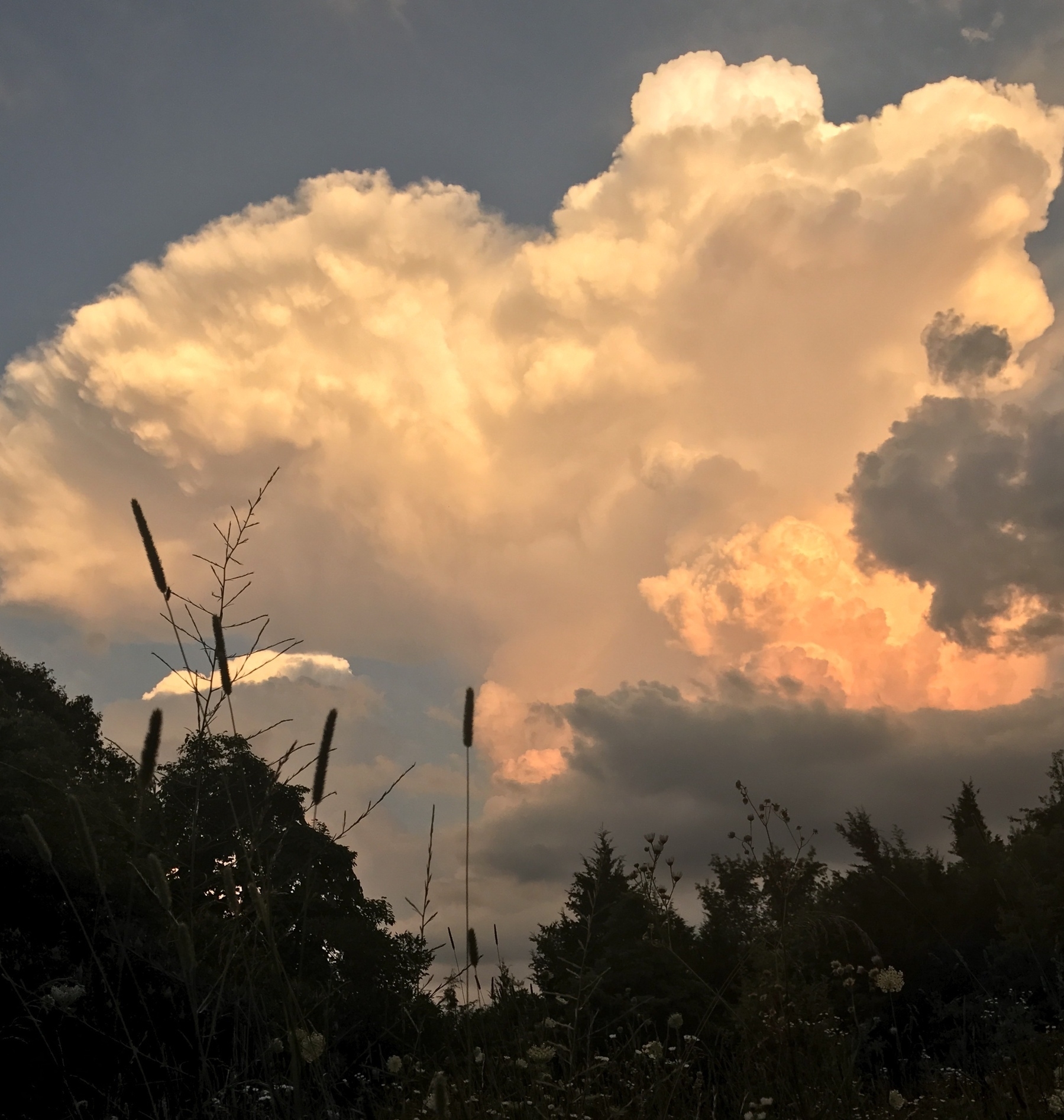
As the sun begins to set the world around me begins to dance.
As my feet crunch along the rock road below, dragonflies spin through the air just above my head. There are so many of them feeding in the fading light of the day that they form a small swarm. Higher in the air the night hawks perform their own acrobatic maneuvers above the fields, also in search of an evening meal.
Nearby, whitetail deer run across the road just as a light breeze finds this smiling human on a quiet rock road. The movement of air brings a mix of sensations to my skin and a sweet scent to my nose.
In the background of it all a sunlit cloud arrangement, complex in its movement, an ongoing description of the forces creating it.
The earth’s rotation pulls the sun further down.
Finishing the Herschel I program
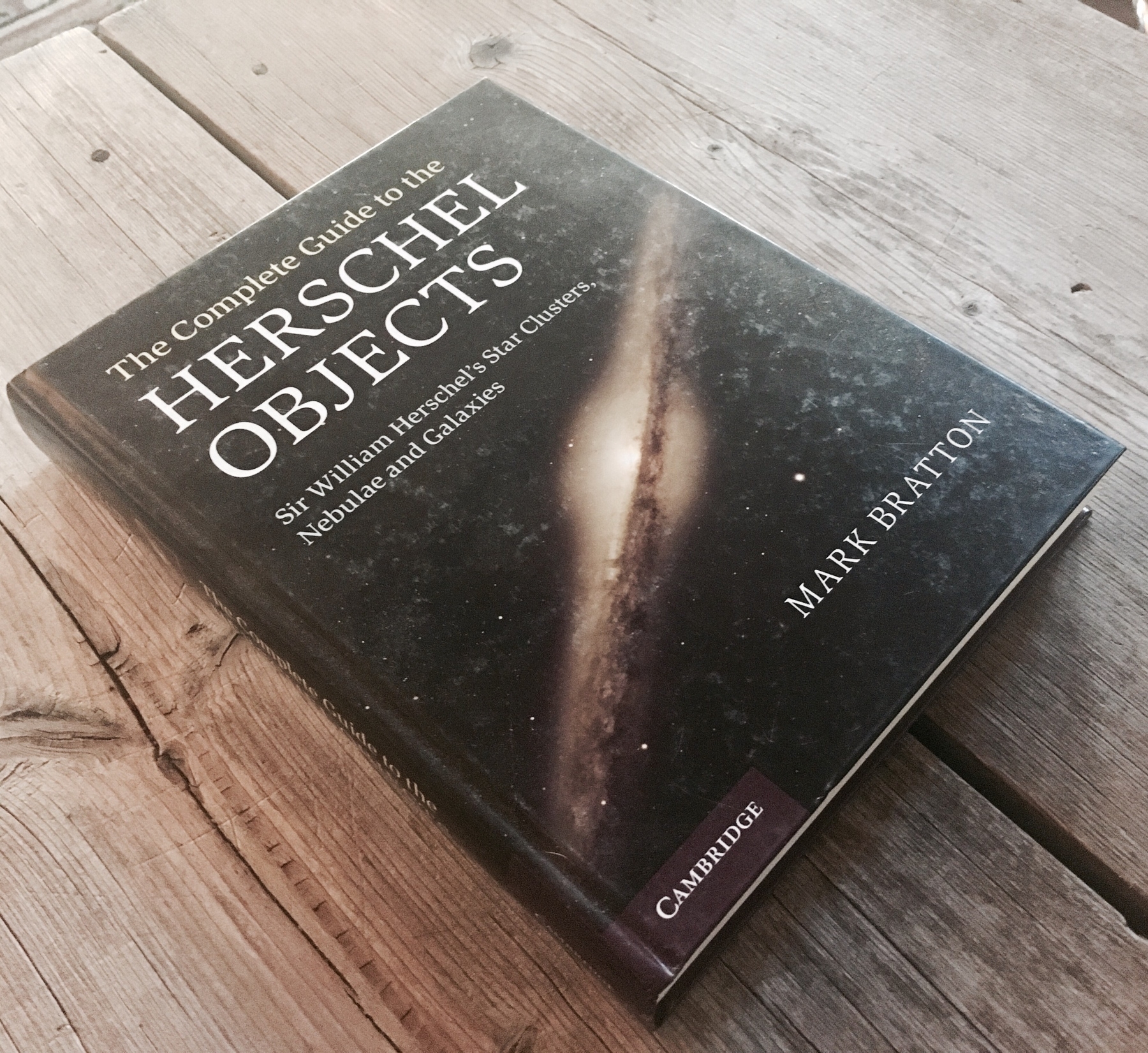
In the fall of 2012 I bought my first telescope since having one as a kid. I wasn’t sure how much use I’d get out of it but I wanted to give it a go. I suspected I’d not regret the purchase. Within the first couple of weeks I’d become obsessed. I went out each clear night and sometimes stayed up till I started dozing at the scope which was often in the wee hours of the morning. Within a couple weeks I’d started keeping track of the objects I was viewing. I started just with the date, object name/ID, date and time. Soon after I started noting the eyepiece I was using as well as a description. It occurred to me that it would be fun to do the full Messier list and get the certificate from the Astronomical League. Not that I cared all that much about the recognition but having a list helps give a bit of order to the process. Had I not taken it on I might have gotten stuck looking at the same objects. Another side effect of having a list and doing the “official” program is the requirement that the observer find the objects on their own. No go-to telescopes allowed. Which was not as much of an issue as I didn’t have a go-to telescope. But reading about the program drew my attention to the idea of systematic searching and recording.
A month into the Messier list I realized there were some nights that when I would have no objects to search for as I would have already found all the available objects on the list that were up in the sky. So it occurred to me to look for another list that I could start at which point I became aware of all the various programs that the Astronomical League administers. I settled on the Herschel I and got started. It’s a list of 400 objects from the NGC catalog of 7,840 objects, largely based on the observations of William Herschel, his son John and his sister Caroline. It’s a mix of galaxies, star clusters and various kinds of nebulae. It’s a great list to do after the Messier list because it is slightly more difficult with fainter objects.
I finished up, or thought I did, about a year later. Upon checking my list though I discovered that I’d bungled a few by not recording proper descriptions and I was also missing a few. So, I started filling in my gaps until, about a year later, I thought I was finished. And, again, I discovered a few I had missed! So, back to it. With each successive check my list of missed objects was getting smaller. Essentially my transition from the initial list to spreadsheet to database introduced a few errors. Over the past couple of months I’ve been taking care of the few remaining objects and in the wee hours of a late September morning I finally got the last object in my eyepiece. NGC 2372, a planetary nebula in Gemini. I entered it in to my report and spent the rest of the morning double checking my final list. All in all the list took about four years and during that time I recorded well over 500 observations for that particular list (many duplicates due to the first 100 or so having been recorded without the detailed descriptions).
What did I learn during the experience? I learned much more about seeing the objects. Early on I was moving too quickly from one object to the next. It was not uncommon for me to log 15 objects in a 4 or 5 hour session. That’s three to four an hour. When you consider the time it takes to find an object in the scope and record the observation it turns out I was only looking at some objects for 5 minutes or so. That’s a minimal amount of time. These days I tend to look at about half that number of objects and I spend more time on each one.
The process of really seeing a faint object requires dark adapted eyes (no bright lights after you start viewing. Only low levels of red light!) and it requires at least 10-15 minutes, often times more, for each object. I also find it helpful and more educational if I take some time reading about the object. I don’t necessarily see the object better but reading about it helps me appreciate what I’m seeing. It’s easy to do using Sky Safari which is my preferred astronomy app. Each object has a description associated with it, many of them are quite detailed. There are also images in the app which can be very helpful in finding some of the details that might otherwise be missed.
I also was also reminded that there is an important connection between observation, vocabulary and description. As with any skilled observation it is important to develop an understanding of the components of what is being viewed. For example, if I’m viewing birds I pay attention to not just the colors but also the shape of the beak and tail, the physical habits, the body shape, the song, etc. There are many details that will help me identify the species of bird I’m looking at as well as understand something about the bird for example it’s diet or food gathering habits. The same might be said of plants, trees, butterflies or any other observation of the natural world including astronomical objects. There is a certain literacy that goes with observation and increased literacy means a more detailed interpretation of the sensory data.
When I first began looking at galaxies I mostly just saw smudges of light. But right off it was evident that the shapes varied. For example, the Andromeda Galaxy (M31) and it’s two neighbor galaxies (M32, M110) vary quite a bit in size, shape, brightness and features. They’re a good starting point and learning tool. M31, a spiral galaxy, fills even the largest wide-field eyepiece with its large disc and offers a concentrated, bright nucleus as well as dust lanes. By comparison, M32, an elliptical galaxy, appears as a compact and bright nucleus with no disc. M110 is also an elliptical galaxy but is much larger than M32 and better described as an oblong nebulosity with a slightly bright central area but no bright core or nucleus. But while these three nearby galaxies are a good starting point and each offer different characteristics to be described they are just the beginning of many galaxies. Then there are the many kinds of nebulae and star clusters to learn about. No doubt astronomy offers many years of possible observation, a lifetime of possibilities in fact.
So, where to next? I’ve already started three other programs: double stars, nebulae, and the Herschel II list. I think I’m going to start the lunar program as well. As our closest neighbor the moon can cause a great deal of light pollution for much of each month making other observations difficult. But it’s a fascinating subject itself, why not enjoy it?!
Sunset Time-lapse
Been having some very active weather lately. That may sound silly as the weather is often active. Maybe more accurate to say that we’ve been having lots of windy days. Thankfully we had a slight let-up in the wind the other day at sunset and there were some very nice clouds rolling through which made for a very nice time-lapse.
Cloudy Day Time-lapse
Cosmic Dance
A few weeks back I wrote about viewing the supernova in M82. It was first observed around the same time that an article was circulating about the continuing and drastic decline of Monarch butterfly populations. I had both the supernova and the threat to the Monarch on my mind when I sat down to write about my observation of M82 but I couldn't quite make the connection I wanted to make. A few days ago the Bad Astronomer, Phil Plait, in describing the earlier generations of star birth and death, comes close to articulating what it was I was pondering:
This happened in the Milky Way billions of years ago, and those elements from some long-dead star made their way into you. Your bones, your teeth, your blood, your very DNA have elements in them forged in the heart of a mighty star that violently tore itself to bits so that eventually you may live. It is a transformation on a literally cosmic scale.
I should hope the metaphorical metamorphosis is obvious enough. The only constant in the Universe is change, and much of it is a cycle. Birth, life, death, restructuring, and rebirth. That is also the theme of much of human art, from paintings and movies to myths and great novels.
Some say science is cold, dealing unemotionally with hard data. But that’s far from the reality. Humanity and life are reflected in the stars, and the Universe itself is poetry.
The thoughts I'd had were specific to the harsh reality of extinction on Earth. The Monarch is not there yet but it's numbers have declined drastically. Other species are also in decline and extinctions happen every day. In fact, according to the Center for Biological Diversity we are now experiencing the 6th mass exctinction event of the planet, loosing dozens of species a day:
It’s frightening but true: Our planet is now in the midst of its sixth mass extinction of plants and animals — the sixth wave of extinctions in the past half-billion years. We’re currently experiencing the worst spate of species die-offs since the loss of the dinosaurs 65 million years ago. Although extinction is a natural phenomenon, it occurs at a natural “background” rate of about one to five species per year. Scientists estimate we’re now losing species at 1,000 to 10,000 times the background rate, with literally dozens going extinct every day. It could be a scary future indeed, with as many as 30 to 50 percent of all species possibly heading toward extinction by mid-century .
Unlike past mass extinctions, caused by events like asteroid strikes, volcanic eruptions, and natural climate shifts, the current crisis is almost entirely caused by us — humans. In fact, 99 percent of currently threatened species are at risk from human activities, primarily those driving habitat loss, introduction of exotic species, and global warming. Because the rate of change in our biosphere is increasing, and because every species’ extinction potentially leads to the extinction of others bound to that species in a complex ecological web, numbers of extinctions are likely to snowball in the coming decades as ecosystems unravel.
For most of my adult life I've gone through a cycle of depression connected to or caused by my awareness of what we are doing to the planet and our fellow species. I will never accept what our species has done, is doing, to our planet but I have found a certain peace in the understanding that the Universe will go on regardless. Our fragile planet and the life on it has an end date. In 600 million years our sun will have have increased in luminosity significantly and the carbon cycle plants depend on will shift causing mass die-off of plant life and animal life. By the time the sun transitions from a main sequence star (4.5 bililon years from now) life on the planet will have long since disappeared. Such is the case for all life supporting planetary systems in the Universe. All stars have a limited lifespan.
The Monarchs will end. Humanity will end. Our planet, our solar system and our Sun will all have an end. So it goes. The cosmic dance will continue... for awhile anyway. What can we do but live our lives in the best possible way? I for one will try to live with a respect for the fragility of life on this Pale Blue Dot and with an understanding that the star stuff that makes up my body and this planet will one day be pushed forth into the Cosmos.
Of Monarchs and Birthdays
It’s Royal’s birthday so I’ll put on a happy face. But this. This. I’m having a real hard time imagining a summertime without Monarchs. What else will we kill off because we don’t know how to live within limits, don’t know how to live as species that recognizes the needs of other species. Every grass lawn, every golf course is a problem.
Prime example, I’ve just had a bit of a family kerfluffle because now that I’m not living at the lake they are making changes. Gone are the native wildflowers, including the butterfly milkweed I planted (the exact food source mentioned in this article), the coneflowers, etc…. replaced by? Grass. Every area we humans occupy (at least those of us I have come to know in my life) we insist upon wiping nature clean with a green lawn or concrete.
Of course I often hear “Oh what does this one little patch matter”? There’s more growing over there (wave hands in some direction). It is as though we each live in a bubble and unwilling to acknowledge that what we do matters because millions (in this nation) of others are doing it as well. The denial of collective behavior and collective effect is very intentional.
So, today Monarchs. Tomorrow?
A Cold and Snowy Night!
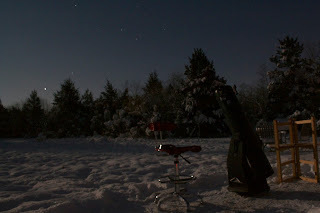 |
| A 13 second exposure of my scope and all the snow nicely illuminated by the moon! Note Sirius in the lower left corner of the image. Wish I'd gone just a bit higher to fit Orion in the image! |
The viewing was perfect! As cold as it was I was toasty warm with 4 layers on my legs, 2 pair of socks, 4 layers on top and my mittens and ski mask. I was able to get in a little more than an hour looking for my clusters and then spent another half hour looking at Jupiter. NGC 7209 and NGC 6940, both open clusters, were quite beautiful.
As beautiful as the views through the scope were what was most enjoyable was the snow covered landscape all around me. Even before the moon was up there was enough light reflected around by the snow that I could enjoy the view. The higher the moon got the better the scene became! The night was so calm and serene.
Pondering the Future
Specifically my personal future and also thinking a bit about this blog. I’ve obviously not been very consistent with updates. Honestly, I put some of the blame for that on Facebook. I’m sure I am not the only one who spends too much time there. While it is great for sharing I thing the downside is that much of that sharing is just reposting. I am also leery of so much content being under one roof so to speak.
So, still here. With the crazy heat and drought of this past summer my garden suffered as did the many trees and bushes I put in over the past four years. That said, almost all of my perennials survived even if they didn’t thrive. Luckily the veggie garden was, by chance, smaller. The climate future looks increasingly scary for those of us that want to eat food, wink wink.
As for my project here, it will continue for the time being though I struggle to remain enthusiastic with the annual veggies. Something about three months of intense drought and heat seems to make my garden time outside a bit less enjoyable. Our well is shallow which means I either need to haul water from the lake or invest several thousand into a new well. Climate change is ugly.
So, I’m thinking that it is time to add in a new element of activity which reflects a new interest (actually a childhood/life interest that has been sitting in a corner of my mind): astronomy! Well, science in general, but astronomy especially. While I have no intention of abandoning the permaculture work I think having another primary activity is a good thing and in the winter when growing is out I’ll have something very interesting to explore, namely, our universe.
Which brings me back to one my thoughts on the blog. I’ve not been consistent in writing about my permaculture/homestead efforts but do think I might be more consistent in reporting on my astronomical explorations as it is the sort of interest that lends itself to data collection and reporting. Should I do that here as a supplement to my other interests or do I start an astronomy based blog? Actually, I think I just sorted it out as I write. I’ll keep it here but will not just add in my astronomical observations but will also add in other science related material.
Actually, and don’t laugh, but I have this vision of humanity (or myself?) that connects to a few episodes/films from Star Trek that have always stuck with me. In particular, those which seem to showcase small, egalitarian villages in which science seems to not only co-exist with daily life, but informs a deeper and greater understanding of the relationship between humans and nature and the larger universe. Contrast this to our modern manifestation which seems to have largely become a tool for corporate profit with little regard to ethics. A great example would be GMOs and modern industrial agriculture as it might compare to a decentralized permaculture-based system informed by local and thoughtful observation.
One outlook, the modern corporate/capitalist/industrial, uses science primarily as a tool for the accumulation of wealth. The other uses science as a method for deepening our understanding of the natural world around us not just for technological development, but for the sake of understanding. In this second outlook the ethics of use would be an important part of the overall process and would include all sorts of new questions and concerns in any sort of possible application of scientific knowledge. In fact, one might say that the second view represents a kind of democratization of applied science.
Wow. I didn’t expect to take this post in this direction but it is interesting and it is something I’ve thought about off and on over the years so, yeah, I’ll be back to this at some point. Another area that I’d like to explore is science literacy and critical thought. There has been a long trend in the U.S. which seems to be gaining a bit of steam when, in fact, it should be losing steam and that is the movement against science. Such a movement can only happen when there is a lack of communication of knowledge. When people are ignorant of established scientific knowledge and the basic method which serves as its foundation there is room for manipulation.
So, you can expect that I’ll be spending some time discussing not just science but specifically science literacy. I’m not a trained scientist but I think I know enough to discuss some issues as a citizen. Specifically I’m likely to dig into the entwined relationship of politics, religion and global capitalism have been used to undermine science literacy to further their capacity as control agents: social, political, economic, ecological… everything from the genetics of corn to humans, from crowd control to the “entertainment” that comes out of the glowing screens in living rooms. Science and technology can be used in many ways for many different and often opposing agendas. I think that will be some interesting exploration.
There is also some real life stuff I’m hoping to make happen that reflects all of this, specifically a few ideas for how I might further science literacy here in rural Missouri where it is greatly needed. I’ll share that as well.
Conservation and Land Ethic
A great article on the Sand Prairie Conservation Area in Missouri, The Vasculum: Strolling the Remnants: Sand Prairie Conservation Area included this quote from Aldo Leopold's A Sand County Almanac in one of the comments. It's been awhile since I read it but I will again very soon:
‘All ethics so far evolved rest upon a single premise: that the individual is a member of a community of interdependent parts. His instincts prompt him to compete for his place in that community, but his ethics prompt him also to co-operate (perhaps in order that there may be a place to compete for). The land ethic simply enlarges the boundaries of the community to include soils, waters, plants, and animals, or collectively: the land. This sounds simple: do we not already sing our love for and obligation to the land of the free and the home of the brave? Yes, but just what and whom do we love? Certainly not the soil, which we are sending helter-skelter downriver. Certainly not the waters, which we assume have no function except to turn turbines, float barges, and carry off sewage. Certainly not the plants, of which we exterminate whole communities without batting an eye. Certainly not the animals, of which we have already extirpated many of the largest and most beautiful species. A land ethic of course cannot prevent the alteration, management, and use of these ‘resources,’ but it does affirm their right to continued existence, and, at least in spots, their continued existence in a natural state. In short, a land ethic changes the role of Homo sapiens from conqueror of the land-community to plain member and citizen of it. It implies respect for his fellow-members, and also respect for the community as such.’
Thanks to Bill for the link.
Thinking of Spring
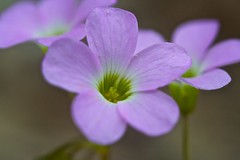 We’ve now had two days above 55 degrees! Yesterday was fantastic with full sun all day. The bees were out of their hive scouting around. The chickens and guineas were happily taking dust baths and scratching through mulch looking for bugs. We’ve had snow cover over much of the ground for most of January and February. It has finally melted off with only a few spots remaining in the deep shade. I’ve started a tray of broccoli, cabbage and kohlrabi and will be starting another of tomatoes and peppers. Oh, and eggplant as well. Basically, I’ll have seed trays on every flat surface in the cabin and greenhouse. Last night, right on que, the Spring Peepers began singing just after sunset. There is nothing more beautiful than the early spring song of these amazing frogs. Listening to them sing in the cool evening of late winter/early spring is magical.
We’ve now had two days above 55 degrees! Yesterday was fantastic with full sun all day. The bees were out of their hive scouting around. The chickens and guineas were happily taking dust baths and scratching through mulch looking for bugs. We’ve had snow cover over much of the ground for most of January and February. It has finally melted off with only a few spots remaining in the deep shade. I’ve started a tray of broccoli, cabbage and kohlrabi and will be starting another of tomatoes and peppers. Oh, and eggplant as well. Basically, I’ll have seed trays on every flat surface in the cabin and greenhouse. Last night, right on que, the Spring Peepers began singing just after sunset. There is nothing more beautiful than the early spring song of these amazing frogs. Listening to them sing in the cool evening of late winter/early spring is magical.
Birds!
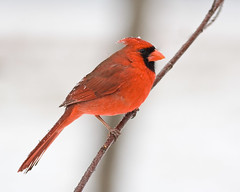 For some reason last winter, my first as a full time resident, I did not feed the birds. Of course I watched them as I do all year but winter feeding of birds is always a treat because it seems to bring so many in. This year I noticed that they noticed the chicken scratch everywhere and were coming in as though I was purposely feeding them. Since then I’ve made it a point to put out bit extra and have added black sunflower seeds. The number of birds has been amazing. I’m not used to seeing six male cardinals at once! One or two is not unusual but six is not something I’ve seen.
For some reason last winter, my first as a full time resident, I did not feed the birds. Of course I watched them as I do all year but winter feeding of birds is always a treat because it seems to bring so many in. This year I noticed that they noticed the chicken scratch everywhere and were coming in as though I was purposely feeding them. Since then I’ve made it a point to put out bit extra and have added black sunflower seeds. The number of birds has been amazing. I’m not used to seeing six male cardinals at once! One or two is not unusual but six is not something I’ve seen. 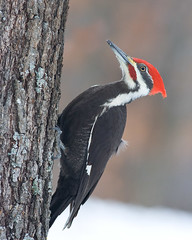 Not as many females. I’m seeing the usual number of other winter birds: Titmice, Black-capped Chickadees, Juncos, Red-bellied Woodpecker, and Downy Woodpecker. I’ve not seen any Pileated Woodpeckers here though I have heard them a few times. I’ve not seen any Gold or Purple Finches recently. One new bird I’ve seen is the White Throated Sparrow which is a very pretty bird similar in look and behavior to the Fox Sparrow.
Not as many females. I’m seeing the usual number of other winter birds: Titmice, Black-capped Chickadees, Juncos, Red-bellied Woodpecker, and Downy Woodpecker. I’ve not seen any Pileated Woodpeckers here though I have heard them a few times. I’ve not seen any Gold or Purple Finches recently. One new bird I’ve seen is the White Throated Sparrow which is a very pretty bird similar in look and behavior to the Fox Sparrow.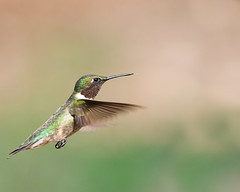
I’ve not been taking any new bird photos largely because I’ve already got so many shots of these particular species. It’s been awhile since I posted any of my nature images so thought I’d pull a few from my flickr archives. For anyone interested in birds, frogs, insects, flowers, moss, fungi and other nature related photography please visit my flickr archives. Most of my nature images were posted in 2007 and early 2008 so it’s easiest to browse them via one of the sets.
Technorati Tags:
Birds, Natural, Photography
Loretta
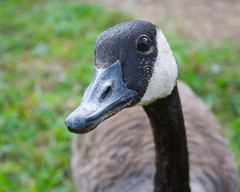 I’m not sure how to say this. I think I’m in love with a goose. Is that strange?
I’m not sure how to say this. I think I’m in love with a goose. Is that strange?
I kid. Really though, she is quite a sweet goose and I am very fond of her. She started hanging out here in early August and has been here every day since. I started calling her Loretta the second or third day she was here. It somehow seemed to fit. She leaves every night to sleep somewhere else, not sure where but she flies off towards the lake and I lose sight of her so my guess is she’s fairly close by. I don’t know where geese prefer to sleep. In any case, she is here most of the day and the little darling has stolen my heart. She follows me around when I’m out doing chores. When I bend over towards her and say her name she smiles. I kid you not. Well, not exactly a smile but she opens her mouth sticks out her tongue and squeeks. And no, this is definitely not the defensive hiss that geese use when threatened. This is something else and it is entirely adorable. She also has decided that I am edible and will nibble on my legs, ankles, toes, etc which tickles unless she get’s carried away and starts pulling hair or a grabs a bit too hard on a toe or two.
One day during her first week here I was in the outhouse doing my business and up she came. She can’t step up so she did this funny little hop up the two stairs and proceeded to come into the outhouse and then sit on my foot. Literally sat down on my foot and remained there. It was all I could do to not burst out laughing.
I have no idea where Loretta came from or how long she’ll stay but I hope she stays around for a good long while. With characters like her around the smiles come easily.
Rooted in a place
Several weeks ago I finally made the short journey down to see Roger’s place. I’d met Roger this past fall through Ruth Ann and the Cowboy Coffee. It’s funny actually, the first or second time I’d gone into the coffee shop Roger was at the far end with Ruth and Juli and they were dancing and goofing off and it was at that moment that I knew that the coffee shop was going to be my favorite reason to drive into town.
Since then I’ve had some great conversations with Roger and he occasionally mentioned his farm south of town in the foothills of the Ozarks. It was obvious the very first time he told me some of the story of his family and this farm that this was a connection to the land far deeper than the norm. Of course, really, that’s not saying much is it? We live in a time when the norm seems to be constant migration with little to no connection to the land. Family farms and land based living has declined steadily for many decades. The norm today is the suburban subdivision or a place in the city. There are rarely any kind of long term connections formed to these places as they are simply meant for relatively short term occupancy by any one family, often 15 years or less.
Roger and his family have woven a different kind of story which is based on an intimacy with a landscape that is hard to really understand. His family first began living there in the mid 1800s and have been there ever since. Roger grew up there and continues to live in a house he built in the 1980s. The house he grew up in, built around the turn of the last century, is a stone’s throw away and is his son’s home today.
On the day of our trip my time was a bit limited so I got the “short” tour. I think we were there for maybe 1.5 hours and having seen what I saw in that time I know that it was the short tour. One could easily spend a day there. Or a lifetime. This is no ordinary place. As we walked and drove around Roger narrated with fantastic detail the various stories of the generations of his family.
The farm is deep down in a valley and feels protected, cradled by the hills. It stays cooler down here. The soil is pretty rocky too though there are quite a few areas which have been cultivated over the years.
We started with the beautiful white two story turn of the century home that he grew up in and then slowly moved further into the landscape and as we went the stories he told went further back in time. There are three springs on the property which, over the years, served as the family’s primary water source. In fact, the proximity to the springs was a primary reason for the location of the homestead. At one of these I bent down and for the first time in my life cupped my hands to drink the sweet water from a cold, natural spring. It flowed from under a tree into the rocky creek gravel. Fantastic.
From there we worked our way down the creek to the original family house which had been cut into three sections and moved from the original location further back which we also saw towards the end of our tour. This was an old, old house. Roger’s grandfather’s bedroom was left as it was when he died many years ago and given the state of the house and lack of windows seemed surprisingly intact. Roger told me of another spring that had been directed to the house using a pipe and showed me the buried tub that had been used to keep fish after they had been caught and before being eaten. In the cold flowing creek just outside the house a very nice bit of water cress was growing and I enjoyed several bites. I’m going to have to see if I can get some of that growing here because it was very tasty!!
Something else that Roger was sure to point out were the trees. So many wonderful trees were growing here! There was a nice mix of very old and young trees as well and the diversity of species was really fantastic. I’d imagine that it would be very interesting to explore the evolution of the land here in much greater detail. Roger knows trees and he knows the trees growing on the farm with great intimacy. In fact, he seems to know every inch of the land which brings me to the heart of this post. While I was in awe of the beauty of this landscape I think it was Roger’s connection to it that really struck me.
To spend an entire lifetime in one place seems very rare these days. That it is such a beautiful place and one that has served as a home for so many generations of a family only deepens an already profound relationship. I cannot really fathom such intimacy with the land. Those of you that know me or that read this blog you know my current adventure trying to co-create this permaculture homestead. I’ve barely been here a year and I already feel more at home. This is a place I spent many of my childhood summers and so there is that connection too. But my childhood memories and my knowledge of my ancestors includes several states and cities and many different yards and homes. There is no long term base for our family.
From the old family house we passed the remains of an old wagon worked our way down and through various pastures and to the creek where there were many beautiful pawpaws growing. Roger relayed the story of the all-day trip to pick-up the wagon from Farmington which, like another story about his grandfather walking to Mine La Motte (20+ miles each way), really gives perspective to life without the combustion engine. It also serves as a reminder of what the automobile has done to change our relationship to the natural world around us. You don’t see many details, smell any honeysuckle, or hear the song of birds when you travel in an air conditioned bubble at 60 mph.
The creek served as a place to swim, play and get cleaned up and I can’t imagine a better place to spend an afternoon. As we crossed the creek on foot to see the steep hillside opposite of the field I was again reminded of the amazing diversity of species in the area. I think if I were to spend much more time there I would begin getting a sense of the patterns and history of the plants and trees but in such a short time it was too much to take in. On the far side of the field away from the creek was a pine covered hill and small pond, an ideal area for blueberries I’d imagine. It was around this time that we circled back and my tour ended.
I look forward to another trip down there when I have more time to take in the details without feeling so overwhelmed. As I come to the end of this post I can’t help but feel that I’m missing something. I think when you’ve had a glimpse of something like this, something special with a history you also leave with questions. History is a story and an old homestead such as this feels like a window or, more accurately, a door that can be stepped through. Having Roger there to tell the history no doubt deepens the appreciation and understanding even as the stories evoke a sense of the unknown. In a strange way it is also a very direct connection to the ongoing flow of history. Roger is a part of it. We all are.
“Time is an enormous, long river and I am standing in it just as you are standing in it. My elders were the tributaries and everything they thought and every struggle they went through and everything they gave their lives to, every song they created and every poem they laid down flows down to me and if I take the time to ask, and if I take the time to see, take the time to reach out I can build that bridge between my world and theirs, I can reach down into that river and take out what I need to get through this world.”
–Utah Phillips from the song Bridges

